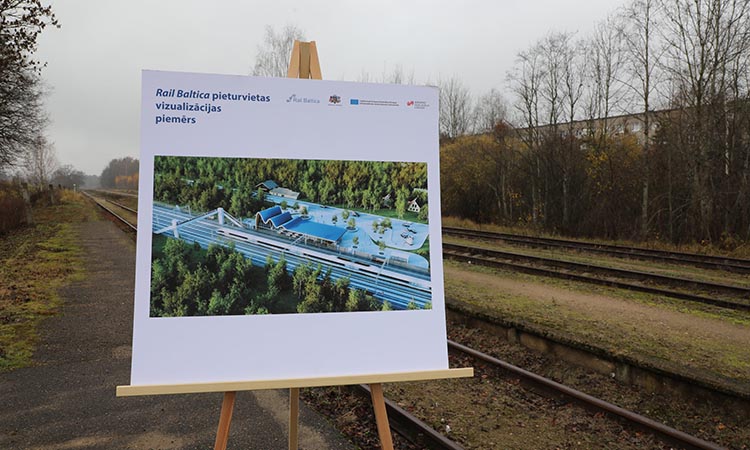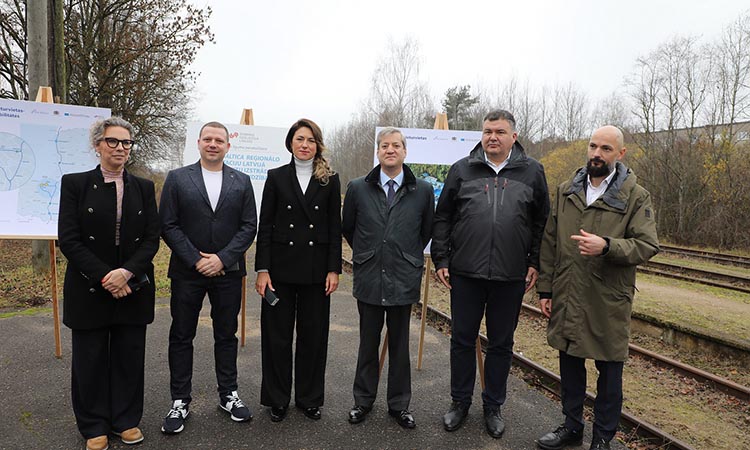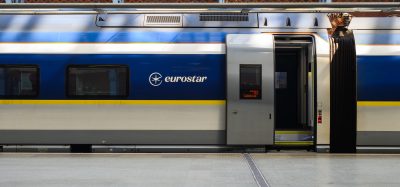Design agreement signed for Rail Baltica mobility points
Posted: 8 November 2022 | Elliot Robinson (Editorial Assistant - Global Railway Review) | 1 comment
Rail Baltica’s mainline in Latvia will include 16 mobility points, bringing the railway together with different modes of transport.


Credit: Rail Baltica
A new cooperation agreement has been signed between the contracting authority Rail Baltica, national implementing body in Latvia Eiropas Dzelzceļa līnijas, and the winner of the public competition RERE INECO. The experienced Latvian-Spanish association of companies will develop the construction designs by 2024 and will conduct author’s supervision until commissioning of the buildings.
“Rail Baltica will significantly change the regional mobility and expand the opportunity of choice of mobility – the speed and precision ensured by train traffic will enable diverting the passenger flow from private to public transport,” Tālis Linkaits, Minister for Transport of the Republic of Latvia, said. “To implement this, cooperation among all the parties involved and the local government plays crucial role for full use of the potential offered by the Rail Baltica stations in the future.”


The construction agreement design signing – Credit: Rail Baltica
Push for mobility
Regional trains of Rail Baltica line will stop both at international stations and regional stops and reach the speed of up to 200 km/h. Within the framework of designing, 16 mobility points are planned on the Rail Baltica mainline in Latvia.
“As soon as the Rail Baltica regional trains start running, people will no longer have to adjust by choosing their places of residence at a closer distance from the centre or Riga or their own vicinities, furthermore, opportunities to create new jobs in regions or even work in the neighbouring countries will be provided”, Kaspars Vingris, Chairman of the Board of Eiropas Dzelzceļa līnijas, said. “In order to create symbiosis between the regional mobility, micro mobility and railway, close cooperation of local governments aimed at adjustments of the vicinities will be required, but this will stimulate the regional development and new activities of national economy.”
“The development of railway lines has historically given additional push to the economic development of new innovations, industries, and countries. Rail Baltica is no exception either,” Mārīte Straume, Chairperson of the board at RERE GRUPA, said. “By combining global and local experience in the right synergy, together with the Rail Baltica project delivery organisations, we will be able to assign specific volumes and shapes to the points currently marked on the map.”
Regional mobility points are expected to bring together different modes of transport – railway, state and municipal buses, private vehicles and electric vehicles, scooters, bicycles, and all other micro mobility tools, as well as develop a range of various services.
“Rail Baltica is a cross-border high-speed railway project with the aim to connect the Baltic States both with each other as well as with the wider European railway network,” Kitija Gruškevica, Head of Latvian branch at RB Rail AS, said. “Regional traffic and mobility points will become an essential part of Rail Baltica. However, they will only be as effective as the connections to them with the relevant supporting infrastructure and micro-mobility solutions. Therefore, cooperation with municipalities and local entrepreneurs will remain an important factor in the future, including to plan additional human resources and funding, and to jointly realise the potential that the construction of these stations can bring to the overall development of the municipality.”
Related news you will enjoy:
Applicants named for 1st stage of Rail Baltica design and construction procurement
Rail Baltica project signs over €353 million grant agreement with CINEA
The Rail Baltica project
Rail Baltica railway system is planned in such a way as to be able to provide cross-border traffic of regional trains, thus allowing connection of border regions in Latvia, Lithuania, and Estonia. Likewise, the system will enable ensuring efficient transfer to international trains.
Subject to the expected amounts of passengers, overall, three types of regional stations are planned – large, medium, and small stations. Station designs refer to the traditional vertical constructions of buildings in the Baltic States, inspired by the Baltic Sea, whereas station buildings are characterised by a glass façade, enabling designing of the premises light and transparent, as well as using wooden panel decoration for the wall design. Various new technologies are also planned to be used in the stations, and it is planned that all station buildings will be near-zero emission buildings with the highest environmental requirements. When planning regional stations, development of the station’s surrounding area is considered to provide passengers an opportunity to not only enjoy attractive environment, but also use functionally planned, easy-to-use and well-equipped outdoor space.
Related topics
Infrastructure Developments, Passenger Experience/Satisfaction, Regulation & Legislation, Route Development, Track/Infrastructure Maintenance & Engineering
Related organisations
Eiropas Dzelzceļa līnijas, Rail Baltica/RB Rail AS, RERE INECO
Related regions
Related people
Kaspars Vingris, Kitija Gruškevica, Mārīte Straume, Tālis Linkaits









Most of those 16 regional stations are in the middle of nowhere for noone.